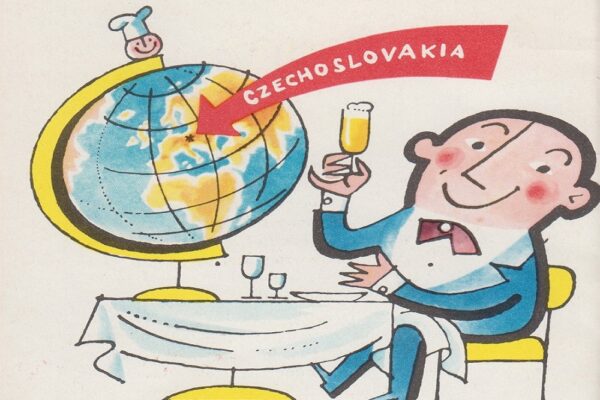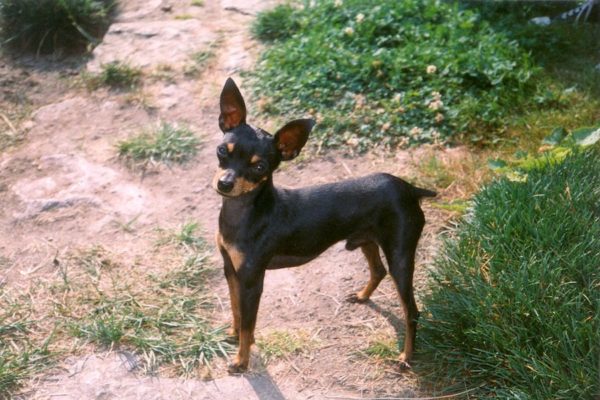Have you ever wondered what a 130 year journey of Czech playing cards may look like? We have and that’s why we’re sharing this post with you today. It all began with Jan Ritter.
Jan Ritter was Czech. He was born in 1842 in (Nové) Kdyně, a town that traces its roots back to the mid 1200s. In Vienna, he married Kateřina (born Vyškova), a lovely bride 12 years his junior. The witnesses at his wedding were the famous Viennese card manufacturer Ludwig Jäger (for whom Ritter worked) and painter of cards, Ferdinand Ullmann.
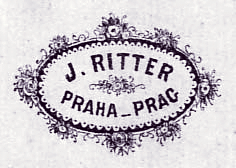
Around the same time, Joseph F. Gregor received a printing license for the cards and in 1880 he conveyed it exclusively to Joseph Leopold Bayer (J.L. Bayer).
John Ritter moved to Prague and in 1882 where he founded the company ‘John Ritter’. It was based in Prague I., Sirková street no. 13.
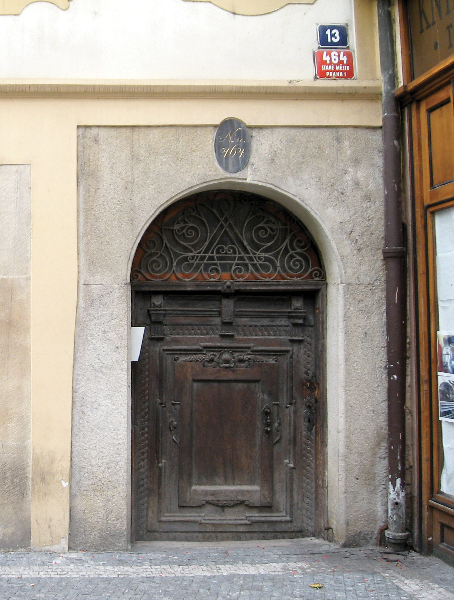
The workshop then moved to Poříčská 1045 / II. (called Na Poříčí today) only to be subsequently returned to its original location on Sirková street (which has since been renamed Melantrichova).
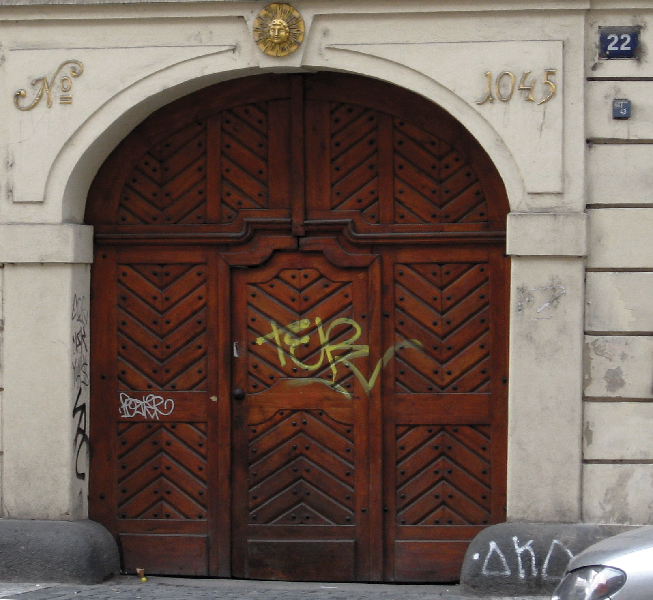
You’ll see later why we are sharing images of the doors.
It’s here that Jan Ritter begins to talk about industrial production of Czech playing cards and by 1884, the production of playing cards begins.
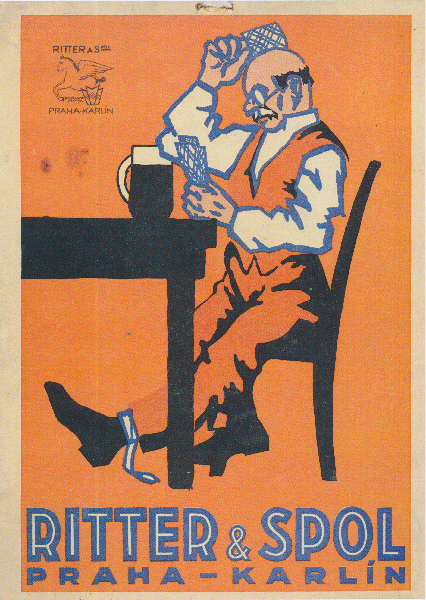
Coincidentally, the very same year, J. L. Bayer also begins the manufacture cards with the company, which are printed commercially in Cologne.
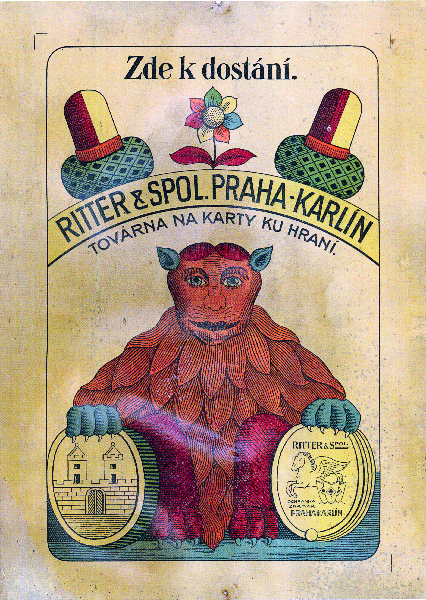
In 1899, with the assistance of J. Glanze and reportedly under very favorable conditions, a merger took place between Ritter’s workshop and Austrian company, Ferd. Piatnik & Sons. This massively expanded the operation with the right to a life partnership and to maintain business administration in Prague.
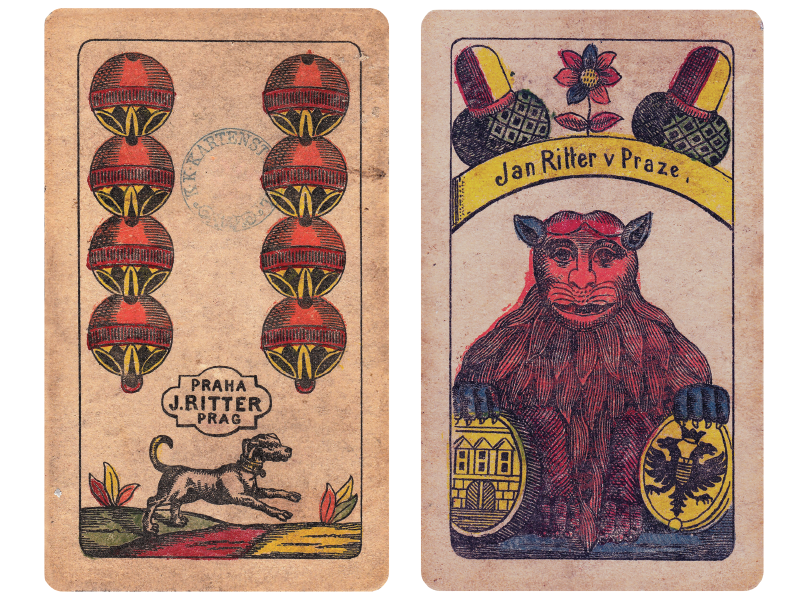
Within two years, by 1901, Jan Ritter is gravely ill, in fact, he’s dying. His wife Kateřina takes over the company and the trade is reduced to only selling goods from the Piatnikovy assortment. Yet Ritter publishes an announcement including her name as the proprietor and states that they were established in 1882 and that they manufacture playing cards, Prague and Viennese style, in all sorts, in both large and small sizes.
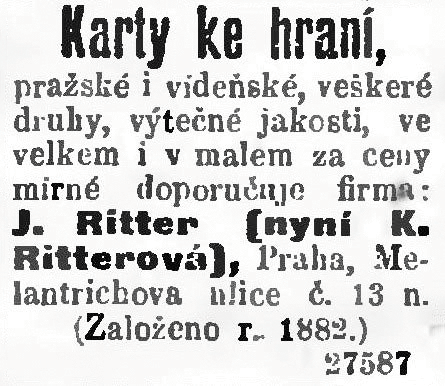
In 1919, the Czechoslovak Foreign Trade Administration prohibits the importation of cards from abroad. This is when the Ritter company actually begins working on different styles and sizes of cards, waiting almost twenty years to expand from the Piatnikovy assortment. At this time, they actually produce their own original card.
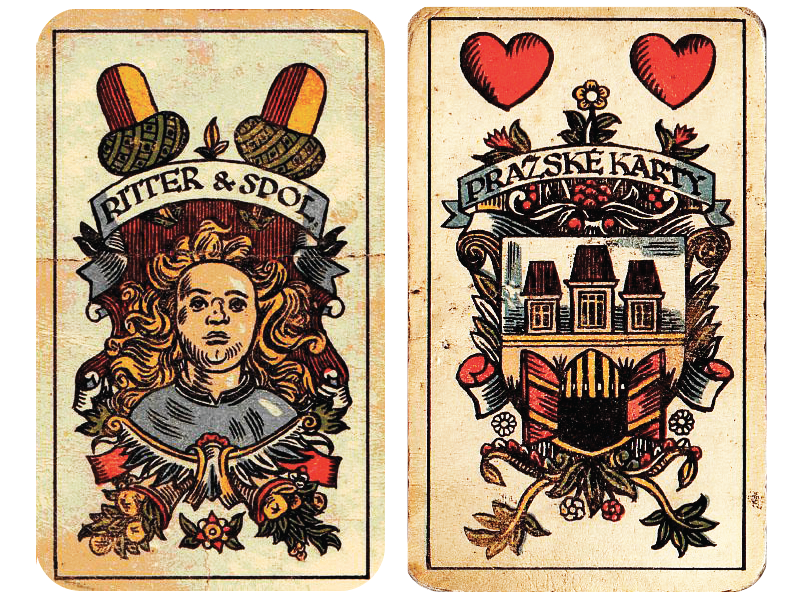
The very same year, the Ritter workshop is bought by Filip Fischl but Kateřina still holds a portion of ownership. The official location is moved to Královské (today Sokolovské) street number 61. The packaging label on the cards changes.

On their first print run in 1920, the new logo is debuted with the winged horse Pegasus, and the three gables.
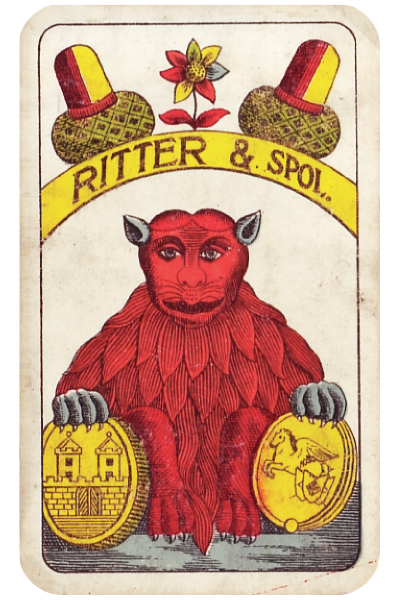
In 1922, Kateřina dies and she wills her interest in the company to one of her three daughters.
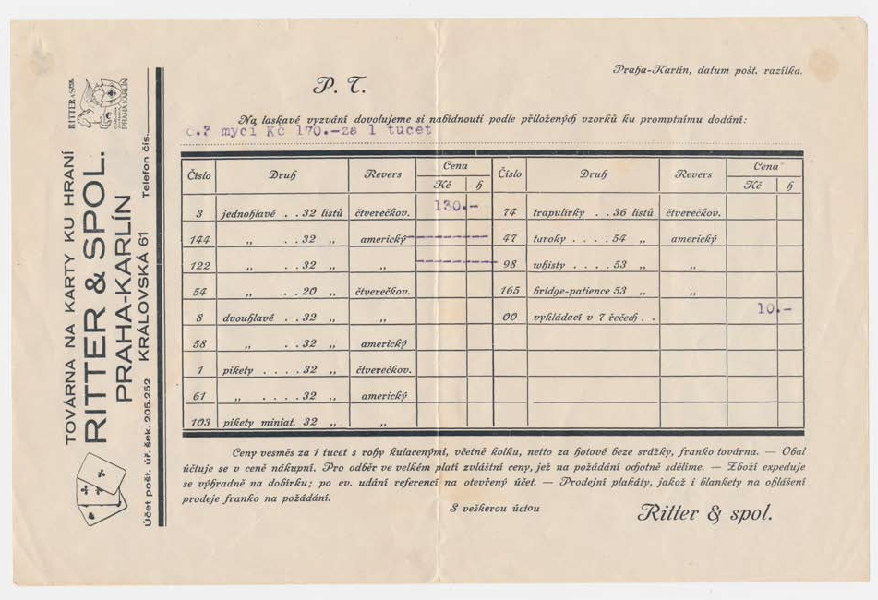
The following year in 1923, the merger between Ferd. Piatnik & Sons and Ritter & Co. Praha-Karlin becomes official (almost 25 years later). They move forward with a modified logo, the Piatnikovy jockey.
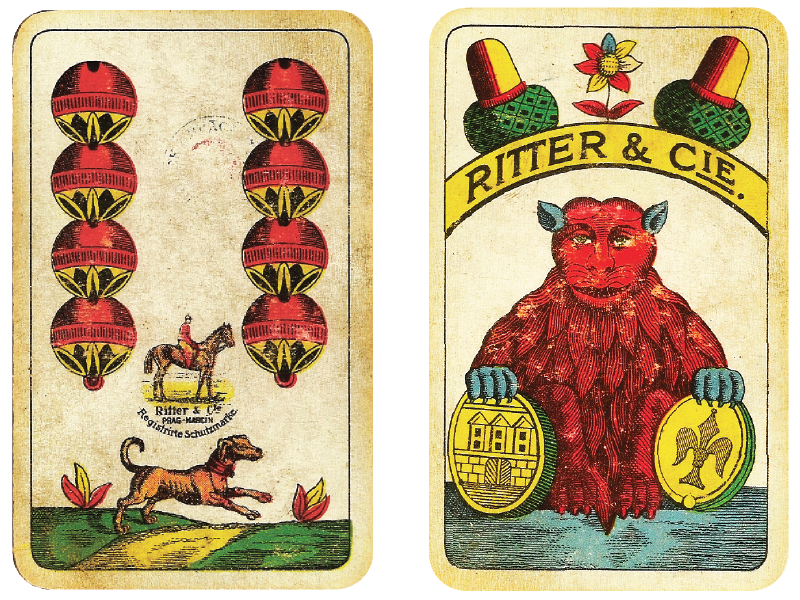
In 1926, an imposter appears on the scene. In Brno, a new company under the name Kartag began to sell their own cards, blatantly imitating the cards of Ferd. Piatnik Sons Ritter & Co. Praha-Karlin. The company went after them and called them out publicly.
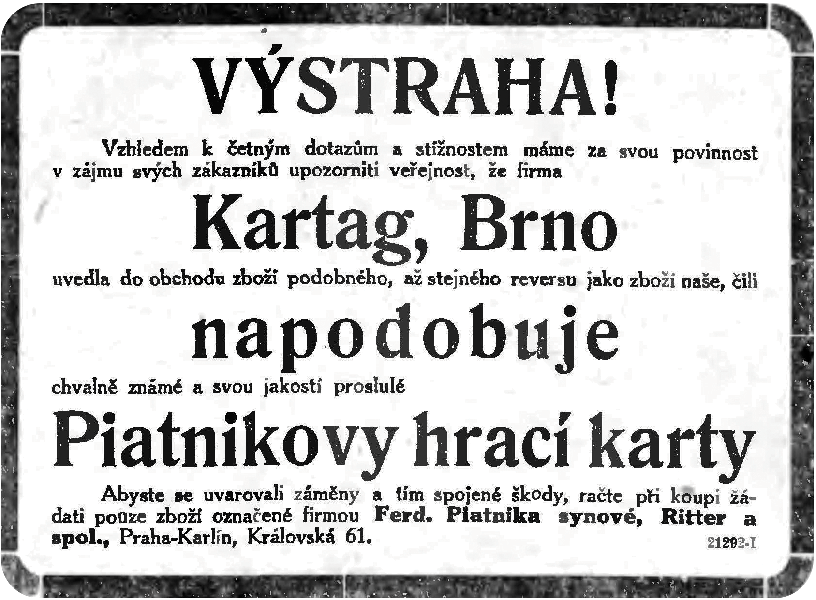
Kartag was taken to the Regional Court in Brno in a civil action and Kartag was banned from producing cards and fined 7045,2 Kč. (Approx. $275 today.)
Ferd. Piatnik Sons Ritter & Co. Praha-Karlin built a new factory for playing cards in Prague’s Vinohrady neighborhood in 1927. The new location was at 7 Lucemburské street and there they issued new playing cards for playing Bridge.
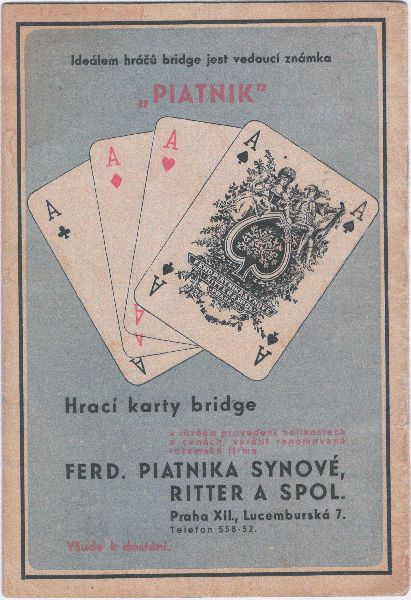
In honor of their anniversary in 1932, the company produced a freshly designed backing for their cards.
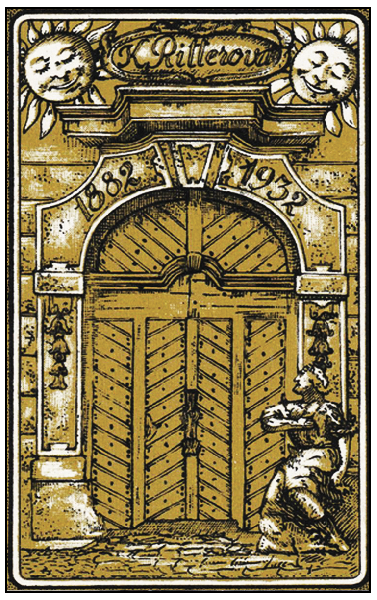
It is generally considered that it is the door of the Melantrichova street address, but perhaps it is rather an entrance to Ritter’s original address at Poříčská #1045 / II. The location where J. Ritter first produced the cards in 1882.
Business continues during the war, but most operations are done out of Vienna.
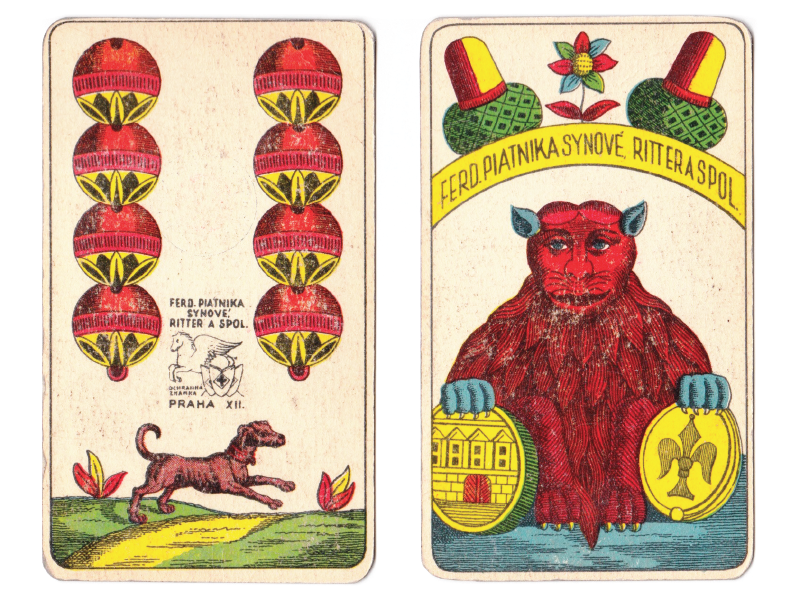
During the three years after the liberation of Czechoslovakia in 1945, the company returns to the name of the twenties and reintroduces the original Pegasus logo. But they issue a more modern version with slightly different card symbols.
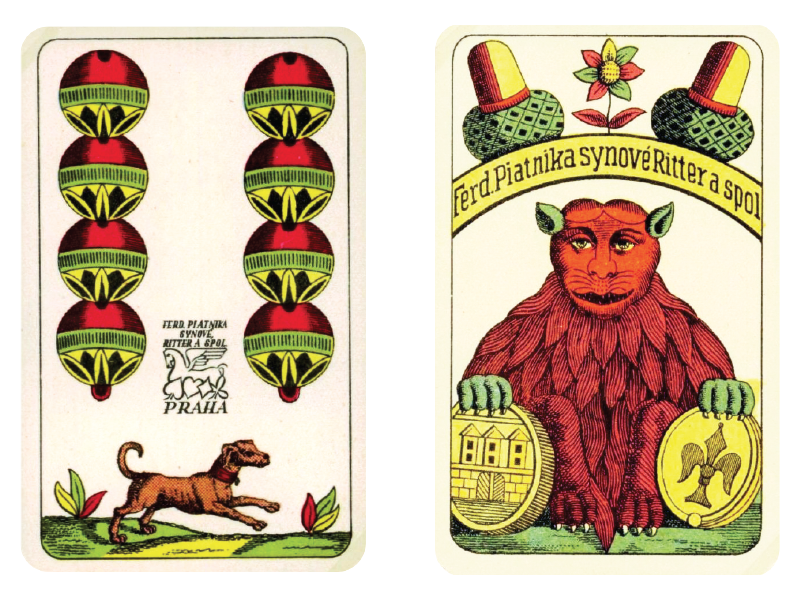
On March 3, 1950, OTK Company is formally appointed and gradually incorporates nearly 40 companies under its national control. Among these are J. L. Bayer, a joint stock company for the printing and paper industry and Ferdinand Piatnik & Sons, J. L. Ritter, et al.
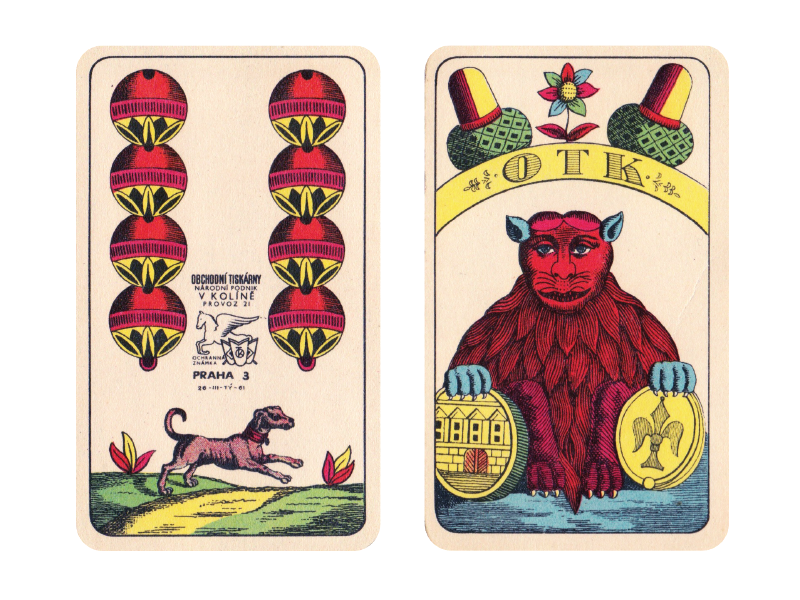
During this time, several incarnations of the cards imprint exist. From a simple “Praha” on a 1980s deck…
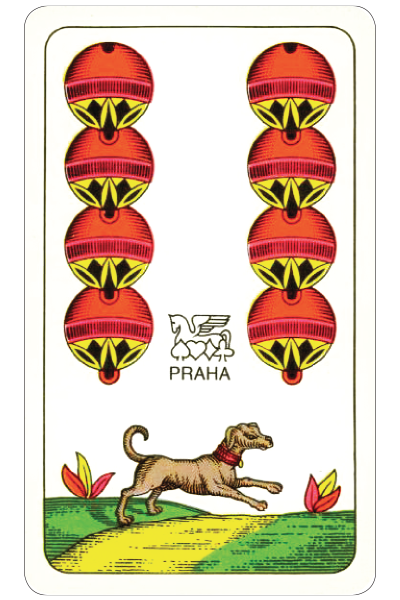
To the new company logo when the national company became a state enterprise, showing itself as Obchodní tiskárna, státní podnik Kolín, provoz 21 Lucemburská 7, Praha 3.
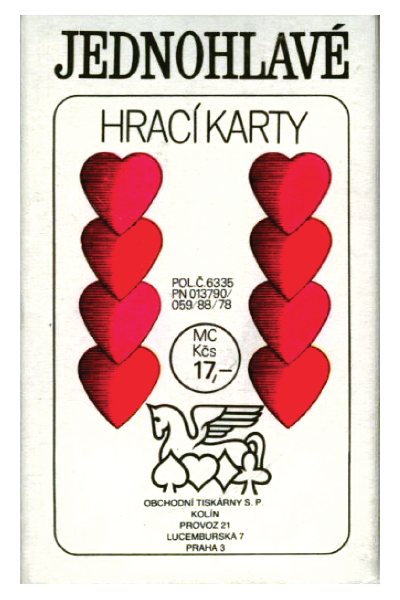
In 1989, the Velvet Revolution restored democracy. Between 1990 – 1994 the enterprise was privatized company which then converted into a corporation. The logo was registered in 1990 and stock was created in the company. Note that Prague is out of the logo and it’s now only Kolin.
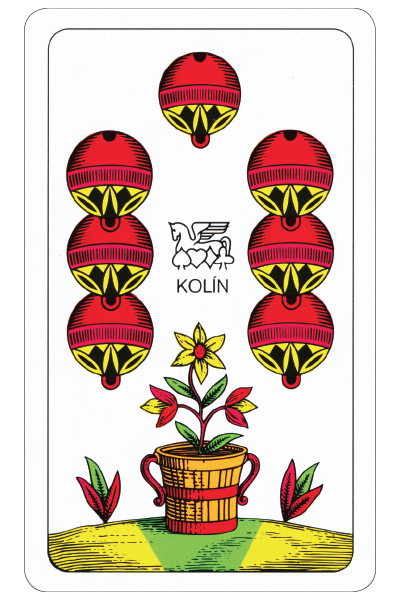
By 1995, the firm was fully privatized and named Obchodní tiskárny a.s. Kolín, Plynárenská, Kolín IV (This translates to Business Printers Inc. Cologne). Kolín is a town in the Central Bohemian Region of the Czech Republic some 55 kilometres east from Prague, lying on the Elbe River.
Meanwhile, in 1993 those with actual ownership rights return to the Czech Republic, as many have restitution claims. Viennese F. Piatnik & Sons and the form of a subsidiary of a company called Piatnik Prague and a Viennese firm, F. Piatnik & Sons. The show their interests in the card company.
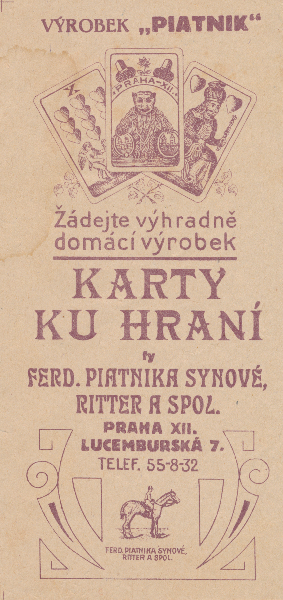
History is sometimes strange to reawaken after a totalitarian regime has drastically changed everything. By 1996, with all of the production of the cards is taking place in Kolín. Prague is being phased out completely.
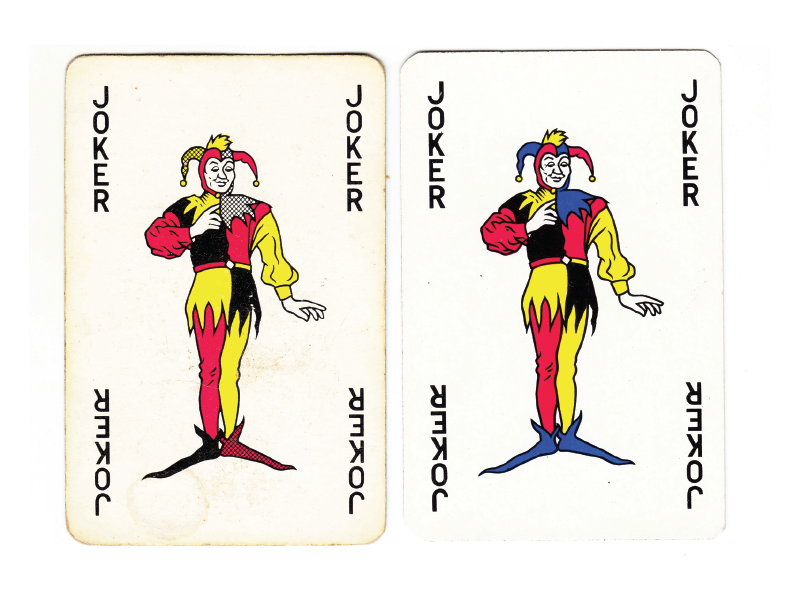
From Kolín, the division which produces the playing cards then moves to Hořovice, a small Czech town in Central Bohemian Region. For a short while, the logo on the front of the cards changed OTK on OTH. They continue to use the stylized Pegasus symbols and lettering but they add a web address to the card.
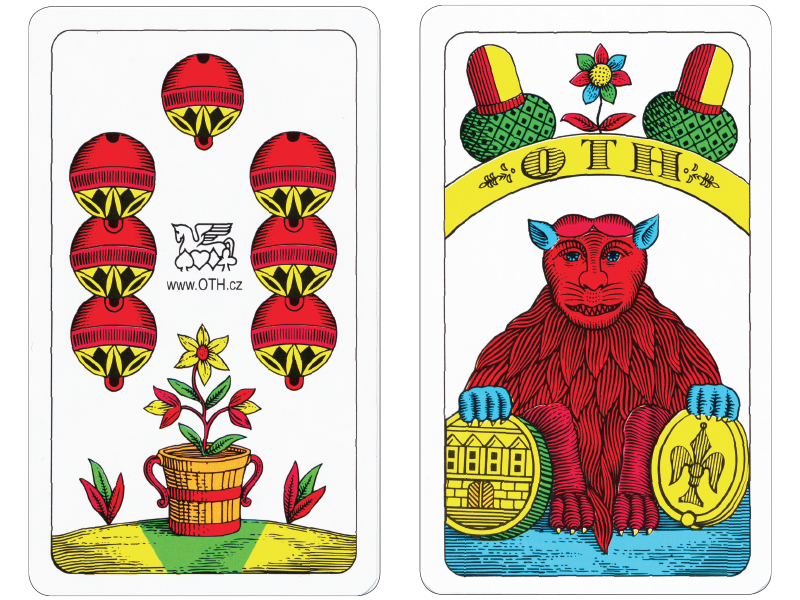
On December 31, 2009, the manufacturing activity in Hořovice was terminated. The manufacture of playing cards within the OTK Group transfers to a subsidiary in the Czech Budejovice (originally Jihočeské tiskárny a. s.).
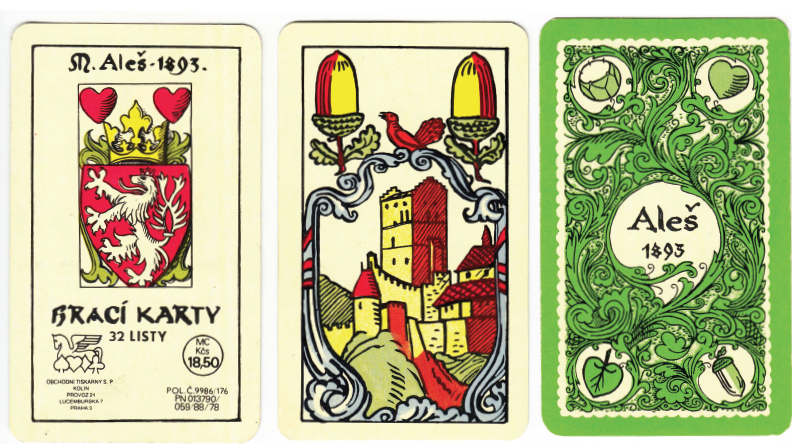
In 2010, the OTK located at the Czech Budejovice branch is closed. OTK definitively ends the production of playing cards.
In 2010, the means of production and inventory is bought out by Hrací karty s. r. o. (a corporation). They become the sole owners of all protective designs and trademarks – including Pegasus.
The original Pegasus then gets a new look and name, “Karty s koníkem” (Cards with horse) and under the “horse” a new inscription which reads “HRACÍ KARTY since 1884”. (“Playing cards since 1884” – Playing Cards is also the name of the corporation.)
Finally, they have the registered trademark identifying them as being in existence since 1884 and as “original”.
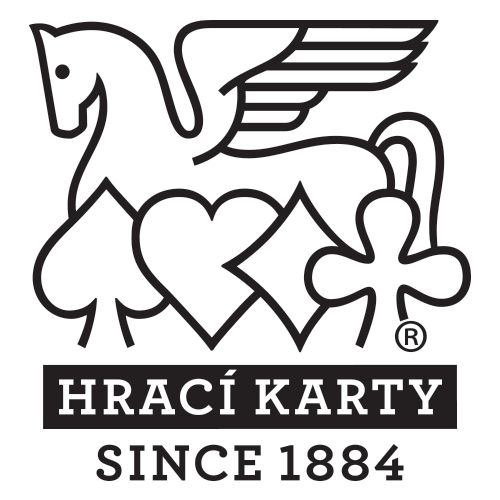
In 2011, the headquarters are moved to Dražovice, a village and municipality in Vyškov District in the South Moravian Region of the Czech Republic.
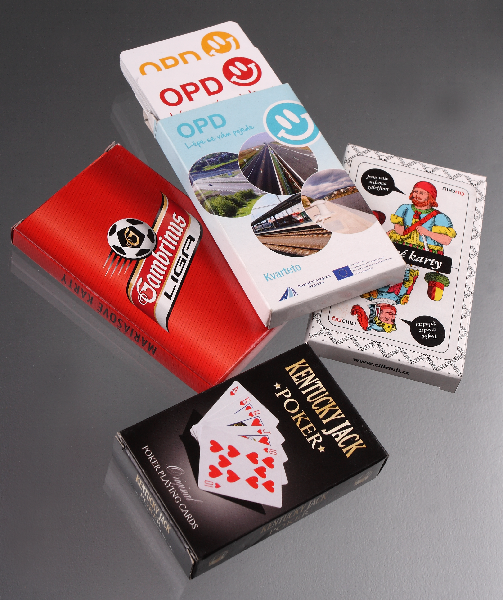
Like most things that fall under corporate control, the quality of the cards is different. Certainly cutting costs to gain more profit, the end result is shown in the photograph above.
In 2012, the company purchases a former printing house and adjacent motel in Zádveřice-Raková, a village and municipality in Zlín District in the Zlín Region of the Czech Republic.
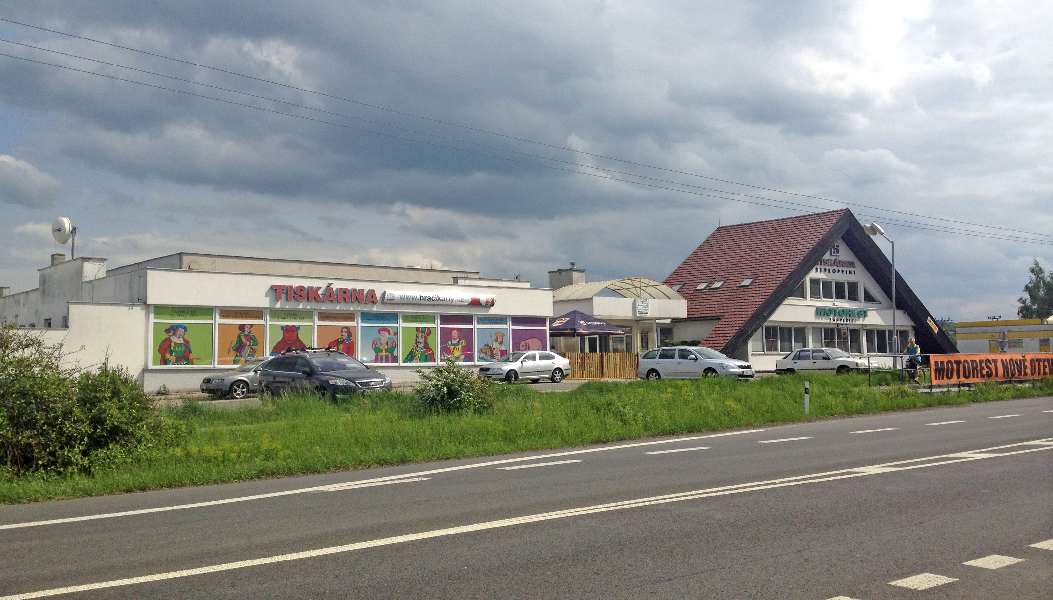
And by 2013, the manufacture of the cards is in full force at the new location.
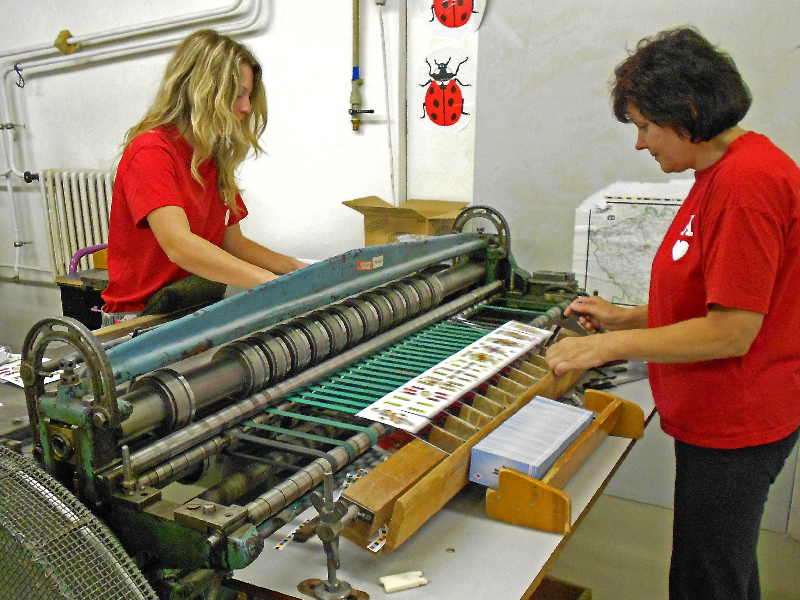
In 2014, the company celebrated 130 years of production of the Czech playing cards originally started by Jan Ritter.
To date, nearly one million packs of playing cards are produced annually. In addition, they also create beer mats and offer larger clients other printing services.
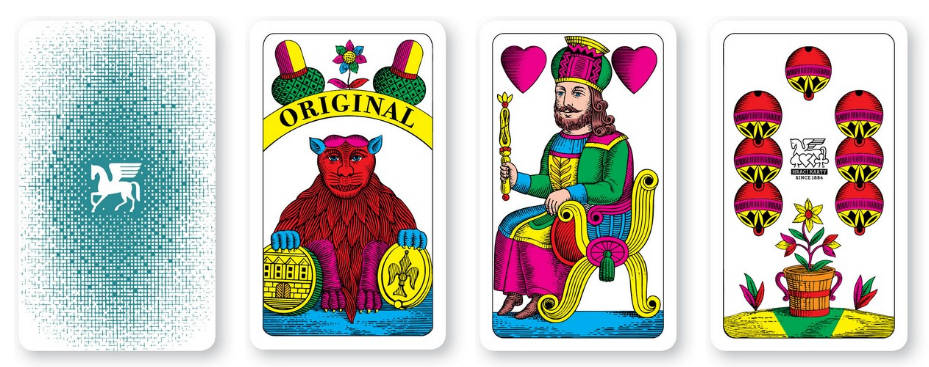
Source: Hraci Karty.
If you have not already subscribed to get TresBohemes.com delivered to your inbox, please use the form below now so you never miss another post.
Remember, we rely solely on your donations to keep the project going.
Become a friend and get our lovely Czech postcard pack.



